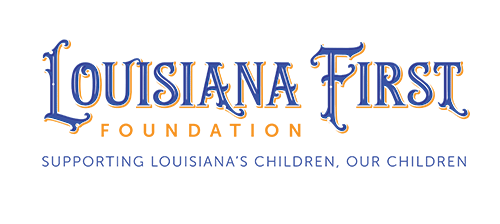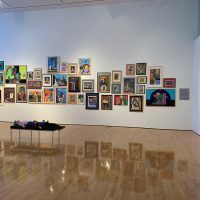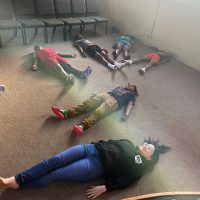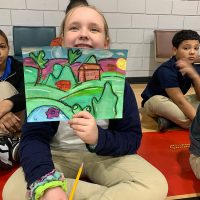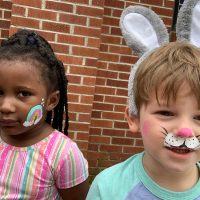Teach MAM
Teach MAM: An Exciting Partnership to Strengthen Arts Education Across Louisiana
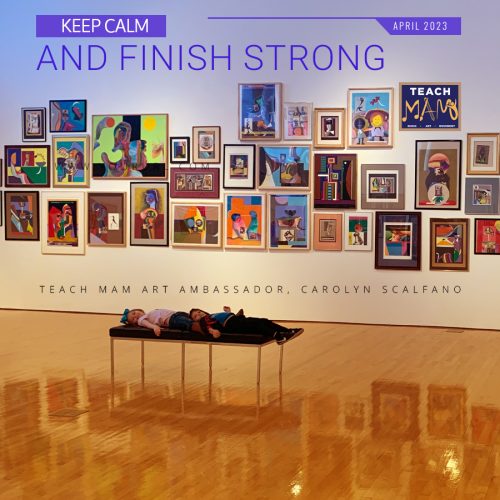
TEACH MAM
Keep Calm and Finish Strong
Written by Carolyn Scalfano
Teach MAM Art Ambassador
Welcome to April! As the flowers bloom and we celebrate the Week of the Young Child, educators nationwide prepare for state-mandated testing. State-mandated testing impacts not only teachers, as we stress to “spray and pray” all the many concepts, standards, and approaches to problem-solving across curriculums, but it also impacts the students. Therefore, I feel that it is our responsibility as educators to prepare kids mentally and support students as they deal with the anxiety that comes with this impending cumulative test.
One way to lighten the mental load is by allowing students an outlet. An example would be a brain break where students stretch, go outside, do some yoga, or read a book aloud to the kids. In addition, we must continue allowing students an opportunity for self-expression, whether journaling, drawing, singing, dancing, or just facilitating a conversation with the class to check in about their feelings.
As I ponder the past school year, I realize we have all accomplished so much. From the faculty and staff at our schools to the hard-working students, all the way up to the top. We have overcome the devastating impacts that the pandemic had on learning. In addition, the Louisiana First Foundation Teach MAM initiative has impacted the state of Louisiana this year in many ways. Not only are we networking across parishes, but we are advocating for the arts in more areas and more ways.
The field of education is not for the faint of heart. With a new acronym created almost every month and extra workload and time sitting in trainings disguised as the solution to the latest exciting buzzwords, the bottom line is that teaching is a challenging and sometimes thankless job. Yet there seems to be a rainbow on the horizon, and I am here to remind you of that. The arts are not going anywhere. There’s no state-of-the-art research-based intel needed here. The fact is that music, movement, performing arts, creative writing, and visual arts are in every single one of us. From athletes to choir members to that one kid that just needs to scribble because they love how it makes them feel, everyone can relate to the arts in some capacity. Finding which avenues resonate with you provides a means of expressing one’s characteristics. It also builds community and connects us through our common interests and talents. Keep this in mind as we embark on this home stretch together. Even if administrators are required to cut back on the time students have in electives so they can cram more core content into the day, remember that you are teaching to the whole child. Every human needs a break, a respite, and opportunities to de-stress. I encourage you to remember the bigger picture and prioritize finding time for yourself and your students to decompress as we finish the year. The good news is that summer is inevitably approaching! Never forget your value. Remember your impact. Let that reminder boost your confidence and give you the fortitude necessary to finish this year strong.
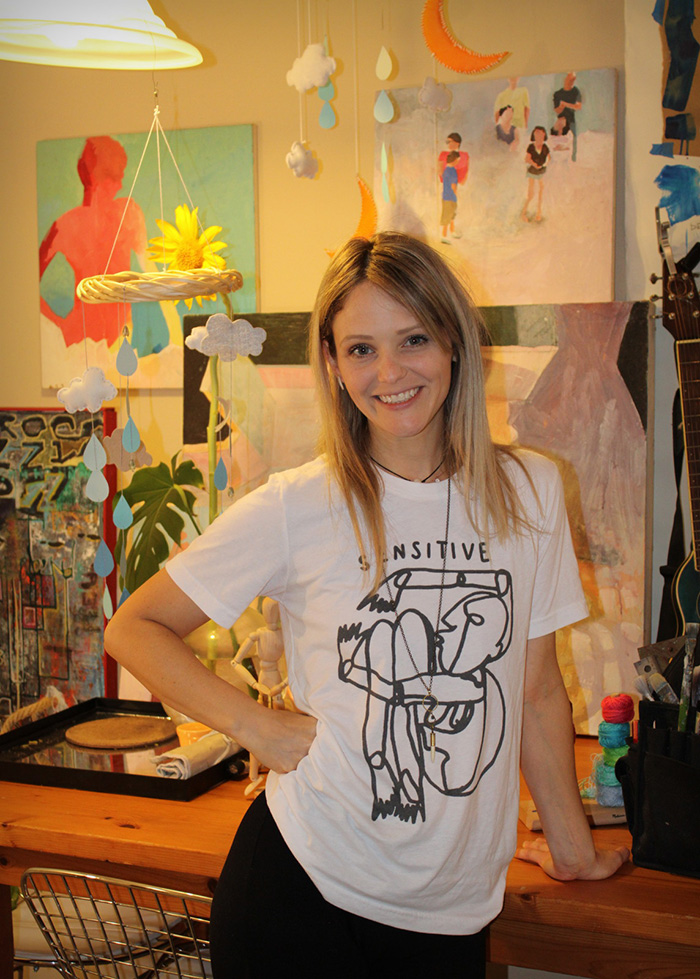
About Carolyn Lenora Scalfano
Carolyn Lenora Scalfano is the Visual Arts teacher at Pineville Elementary in Rapides Parish. She also serves as the school’s representative for the Good Food Project of Central Louisiana, in which the school’s gardens provide fresh produce distributed to Food Bank clients or local non-profits that serve food to the needy.
Carolyn’s passion for aesthetics led her to study architecture at Louisiana State University’s College of Art and Design. After professional insight and mentorship by college faculty, she was encouraged to pursue a studio art degree. Inspired by the arts community in Lafayette, LA, she transferred to the University of Louisiana at Lafayette to earn her Bachelors of Fine Art with a concentration in painting.
After graduating from the UL program, Carolyn worked as an illustrator and landscape designer for LAND Architecture in Lafayette, LA.
As a professional working artist, Carolyn was represented in 2008 by Ariodante Gallery in New Orleans, LA. She showcased a solo exhibition and was featured on their website, selling multiple works to buyers nationwide. In 2010 her paintings were featured in a two-person show, Another Time, at the Acadiana Center for the Arts. More recently, she participated in the 2019 exhibition, Pace 20: Twenty Years of Teaching Artists, in the Acadiana Center for the Arts’ main gallery with works by the seventy Primary Artistic Creative Experiences (PACE) teaching artists.
As a PACE teaching artist, her role was to design arts integration lessons for students grades PK-3 in the Title 1 Schools of Lafayette Parish. Having spent years collaborating in the classroom, she eventually pursued and received her teaching certification in Elementary Education from Louisiana.
Currently, Carolyn is Pineville Elementary’s resident Visual Arts Teacher. She designs her art lessons around individual conversations she has with each of the teachers she works with at Pineville Elementary. They collaborate to develop relevant projects to the students and integrate art into the other subjects to present the curriculum in a new and exciting way.
Carolyn is on the Pineville Elementary Lighthouse Team for the Leader in Me, which is rooted in teaching the Seven Habits of Highly Effective People. Being in charge of the Leadership Environment includes managing the physical look of the school (what people see), the common language (what people hear), and the emotional environment (what people feel). This planning includes organizing numerous collaborative art installations where all PES members, including faculty, staff, and students alike, create original art pieces displayed throughout the campus. The underlying goal is that the students feel ownership of the building by seeing their artwork displayed throughout the school.
Her collaboration with the Good Food Project entails creating organic school gardens in which students do all maintenance. By working in the garden, the children learn hands-on about developing agricultural ecosystems intended to be sustainable and self-sufficient.
